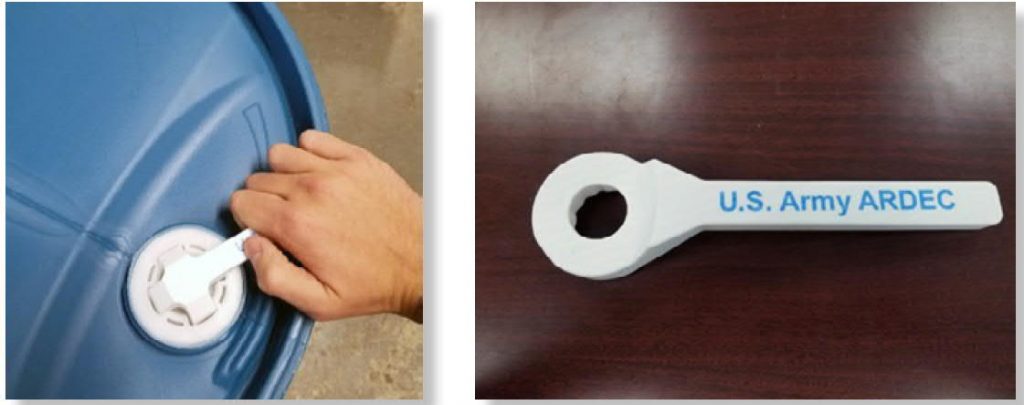In September 2019, U.S. Army Secretary Ryan McCarthy issued a directive supporting the force’s ongoing implementation of 3D printing. Establishing a policy for the four official factions of the U.S. Army, the directive focuses specifically on “Enabling Readiness and Modernization Through Advanced Manufacturing” encompassing additive manufacturing, artificial intelligence (AI), robotics, and advanced composite materials.
“Advanced manufacturing will fundamentally change the way the Army designs, delivers, produces, and sustains materiel capabilities,” states the objective.
“It will enable the Army to modernize systems while simultaneously enhancing readiness.”
As part of the directive the U.S. Army Futures Command, established 2018, is also charged with writing a strategy to develop additive manufacturing capabilities for the Army, along with appropriate security/IP protection measures.
Additive manufacturing in the U.S. Army
As a primary source of funding for cutting edge research, and itself a center of excellence for scientific discovery and engineering, the U.S. Army has established initiatives across a variety of additive manufacturing modalities.
With the Marine Corps Systems Command (MCSC), the U.S. Army Corps of Engineers (USACE) is working to build bases using 3D printed cement. The Army Research Laboratory (ARL), among many things, is developing high-strength alloys for 3D printing. Late 2018, ARL and the U.S. National Center for Manufacturing Sciences (NCMS) also opened the Advanced Manufacturing, Materials, and Processes (AMMP) Center and Consortium in Aberdeen, Maryland. Leading 3D printer OEM 3D Systems is a key collaborator for additive manufacturing projects at the center.
This year, together with additive manufacturing accelerator America Makes, and Pennsylvania-based consultancy Catalyst Connection, the National Center for Defense Manufacturing and Machining (NCDMM) launched its AMNOW program to facilitate additive integration into army logistics.
With such developments in mind the new modernization directive, effective 2019 – 2029, appears to be an effort to continue this momentum on an Army-wide scale.

U.S. Army implementing Industry 4.0
The new policy outlines four objectives for the application of advanced manufacturing.
The first objective is “allowing for the production of complex parts that cannot be manufactured using traditional processes.” With such production, the Army expects to improve system performance, as well as encourage innovation “with unparalleled speed” due to the capabilities of rapid prototyping.
The second objective discusses the development of an Industry 4.0 production network, enabling “connection between machines, products, and people” for “improved quality control, predictive maintenance, and automatic ordering of supplies.”
The third objective highlights advanced manufacturing’s ability to “address the readiness challenges posed by parts obsolescence.” Though not exclusively relating to 3D printing, this area could be expected to benefit the most from the technology due to its application for on-demand fabrication.

In one final point, the directive emphasizes the importance of integrating advanced manufacturing early on in a system’s life cycle, adding, “Organizations across the Army, including requirements, research and development, acquisition, sustainment, and contracting activities, must continue to invest in and embrace advanced manufacturing.” This point is further explored in the policy outline.
The document also encourages personnel to “consider alternative license models” when negotiating license rights to Army IP, suggesting “a fee-based agreement under which a negotiated price is paid to the entity that created the IP each time a part is 3D printed.”
The document concludes with a list of orders applicable to those with leading roles in the fulfillment of the directive. Namely Bruce Jette, Army Civilian Acquisition Chief and Assistant Secretary for Acquisition, Logistics, & Technology, will be leading the policy and within the next two years has the goal of revising Army regulations in line with the direction. Working with Army Materiel Command, Army Futures Command, and the Deputy Chief of Staff for Logistics, Jette must also develop a detailed implementation plan for the policy, and another plan specifically for digital engineering.
For more additive manufacturing news subscribe to the 3D Printing Industry newsletter, and join us on Facebook and Twitter for live updates. Join 3D Printing Jobs for career opportunities near you.
Featured image future warfare. Image via U.S. Army on Twitter



